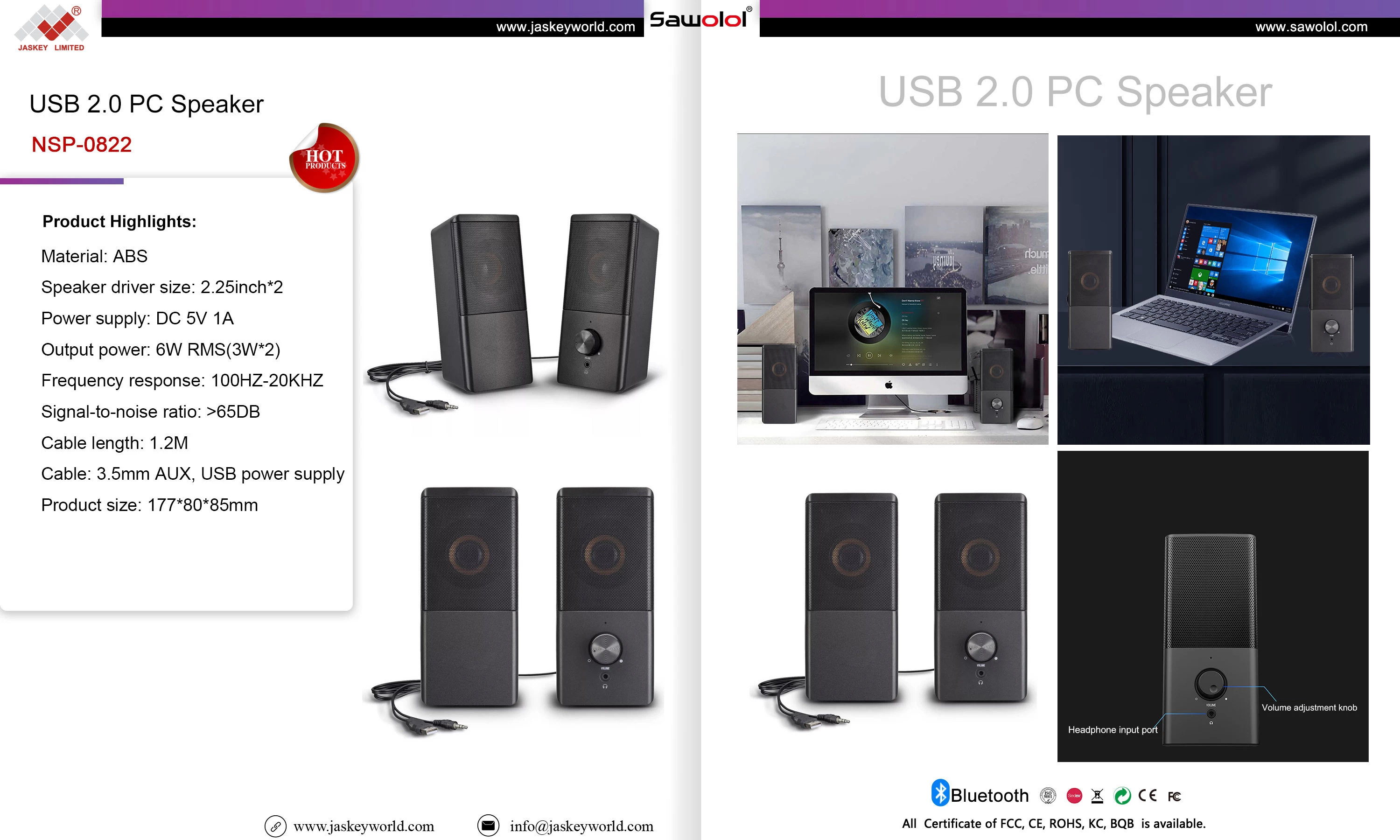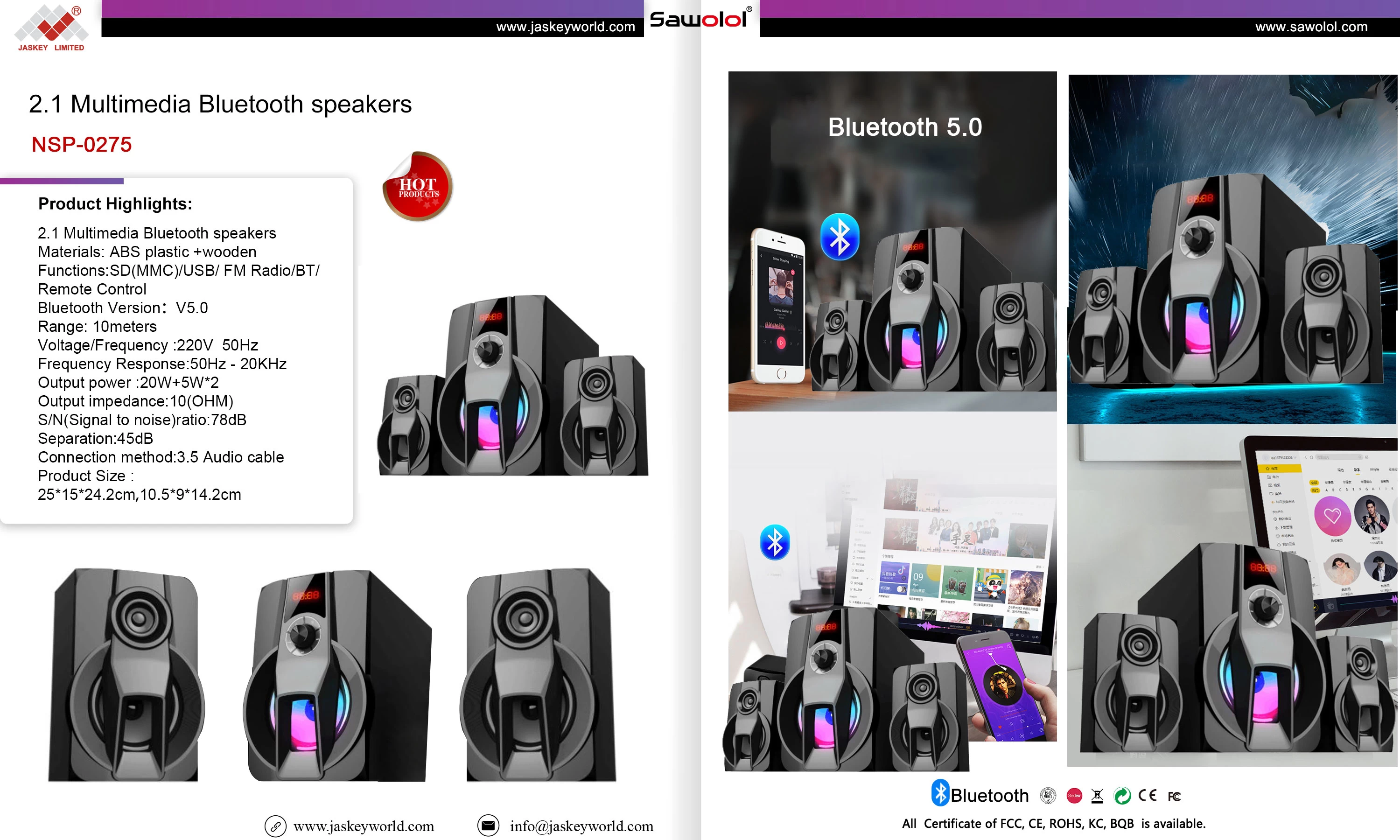The difference between 2.0 speakers and 2.1 speakers
In essence, they are all stereo playback systems, but the difference lies in the low-frequency playback. The 2.0 speaker system comes with it, and the 2.1 speaker system has a special subwoofer for low-frequency playback.

Why take out the low frequency and hand it over to a special speaker for playback? Because the low frequency always needs a lot of loudness to be heard by people, it is also difficult for people to play back the low frequency.
Generally speaking, a speaker with a smaller area is more suitable for reproducing high frequencies, and a speaker with a larger area is more suitable for reproducing low frequencies. Because of the low frequency, the output impedance of the vibration unit is much higher than the radiation impedance, and this radiation impedance increases with the increase of frequency and radiation area. Only when the input impedance is equal to the power output impedance, the power output power can be maximized. Therefore, if you want to increase the low-frequency radiation power, the easiest way is to use a larger vibration unit. If you want to play back low-frequency sounds, the power must be strong and the speaker must be large.
The early traditional power amplifiers represented by Class A amplifiers have a very annoying characteristic, that is, most of the energy is used for heat generation, and only a small part of the energy is used for work. When people like small-sized speakers but want to enjoy high-quality low-frequency content, the famous audio engineer Josef Anton Hofmann successfully found the answer to this problem, that is, the speaker can only choose between volume, low-frequency dive and efficiency at the same time Both, this is the famous Hoffman's law. However, as mentioned earlier, traditional Class A power amplifiers used very little energy for sound work, so people equipped 2.0 speakers with speakers for playback of low-frequency content, and assembled the tweeter and subwoofer on a center, which became Coaxial speakers form a 2.1 system.

After the 21st century, people also began to apply class-d amplifiers to subwoofers. Class D amplification efficiency is higher, and the energy utilization rate is much higher than that of a class power amplifier; at the same time, smart engineers began to think about such a question: since the size of the unit determines the lower limit of low frequency playback, can we also install a subwoofer Two woofers? So it becomes the famous back-to-bass structure.


